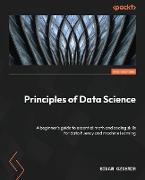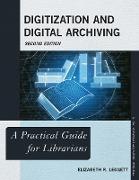Principles of Data Science - Third Edition
BücherAngebote / Angebote:
Transform your data into insights with must-know techniques and mathematical concepts to unravel the secrets hidden within your data
Key Features:
Learn practical data science combined with data theory to gain maximum insights from data
Discover methods for deploying actionable machine learning pipelines while mitigating biases in data and models
Explore actionable case studies to put your new skills to use immediately
Purchase of the print or Kindle book includes a free PDF eBook
Book Description:
Principles of Data Science bridges mathematics, programming, and business analysis, empowering you to confidently pose and address complex data questions and construct effective machine learning pipelines. This book will equip you with the tools to transform abstract concepts and raw statistics into actionable insights.
Starting with cleaning and preparation, you'll explore effective data mining strategies and techniques before moving on to building a holistic picture of how every piece of the data science puzzle fits together. Throughout the book, you'll discover statistical models with which you can control and navigate even the densest or the sparsest of datasets and learn how to create powerful visualizations that communicate the stories hidden in your data.
With a focus on application, this edition covers advanced transfer learning and pre-trained models for NLP and vision tasks. You'll get to grips with advanced techniques for mitigating algorithmic bias in data as well as models and addressing model and data drift. Finally, you'll explore medium-level data governance, including data provenance, privacy, and deletion request handling.
By the end of this data science book, you'll have learned the fundamentals of computational mathematics and statistics, all while navigating the intricacies of modern ML and large pre-trained models like GPT and BERT.
What You Will Learn:
Master the fundamentals steps of data science through practical examples
Bridge the gap between math and programming using advanced statistics and ML
Harness probability, calculus, and models for effective data control
Explore transformative modern ML with large language models
Evaluate ML success with impactful metrics and MLOps
Create compelling visuals that convey actionable insights
Quantify and mitigate biases in data and ML models
Who this book is for:
If you are an aspiring novice data scientist eager to expand your knowledge, this book is for you. Whether you have basic math skills and want to apply them in the field of data science, or you excel in programming but lack the necessary mathematical foundations, you'll find this book useful. Familiarity with Python programming will further enhance your learning experience.
Folgt in ca. 10 Arbeitstagen




